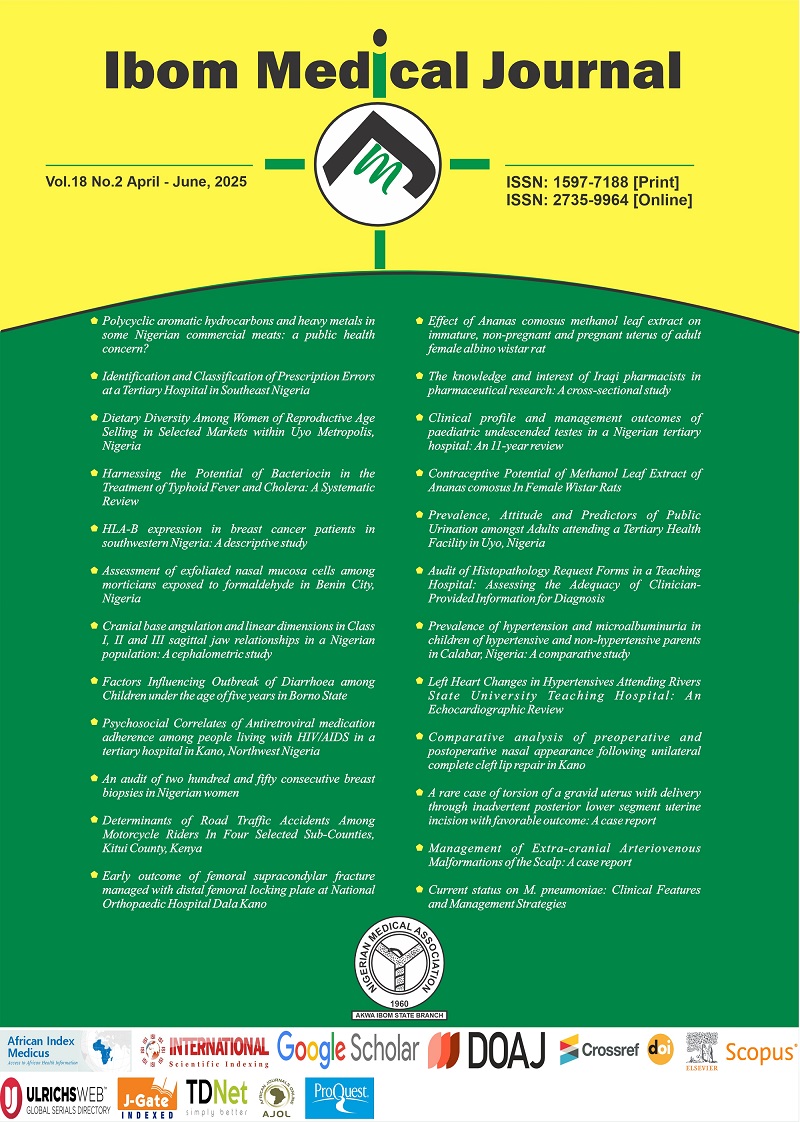Clinical profile and management outcomes of paediatric undescended testes in a Nigerian tertiary hospital: An 11-year review
DOI:
https://doi.org/10.61386/imj.v18i2.673Keywords:
Cryptorchidism, Undescended testis, Orchidopexy, Delayed presentation, Paediatric surgery, NigeriaAbstract
Context: Undescended testis (UDT) is a common urogenital abnormality in male children, and early intervention is imperative to prevent impaired spermatogenesis or malignant transformation.
Objective: This study analysed and documented the presentation, pattern, and management outcomes of paediatric UDT at the University of Uyo Teaching Hospital (UUTH), South-South, Nigeria.
Methods: This was an 11-year retrospective descriptive study of children managed for UDT at the Paediatric Surgery Unit of UUTH between January 2012 and December 2022. Data were extracted from case notes using a structured proforma, documenting age, clinical presentation, surgical procedures, and postoperative outcomes. Statistical analysis was performed using SPSS version 24, and results are presented as frequencies, percentages, and medians with interquartile ranges (IQR).
Results: Sixty-five children were treated for UDT, with ages ranging from 7 months to 15 years (median: 5 years, IQR: 2–9 years). The most common presenting complaint was an empty scrotum in 51 patients (78.5%). Three-quarters of the patients (78.5%) presented after their first birthday, with the most frequent reason for delay being advice from healthcare workers to wait indefinitely. The right testis was undescended in 30 patients (46.1%), the left in 15 (23.1%), and bilateral in 20 (30.8%). Forty-seven (72.3%) had palpable testes, while 18 (27.7%) were nonpalpable. The canalicular position was the most frequent testicular location (48.2%), and the most common associated anomaly was congenital hernia or hydrocele (97%). Single-stage orchidopexy was performed in 53 patients (81.5%), two-stage in 8 (12.3%), and orchidectomy in 4 (6.2%). The overall success rate for orchidopexy was high, with a 21.5% complication rate, the most common being scrotal surgical site infection (13.8%).
Conclusion: Undescended testes is a common condition in male children with good surgical outcomes when treated early. In our study, most patients presented after their first birthday, often due to delayed referral by healthcare workers. Early referral and awareness campaigns are essential to reduce delays and improve outcomes.
Downloads
Published
License
Copyright (c) 2025 Ituen MA, Akpanudo EI, Eyo AE, Emmanuel EM

This work is licensed under a Creative Commons Attribution 4.0 International License.










